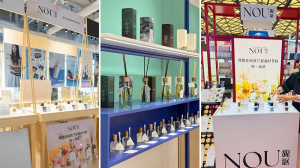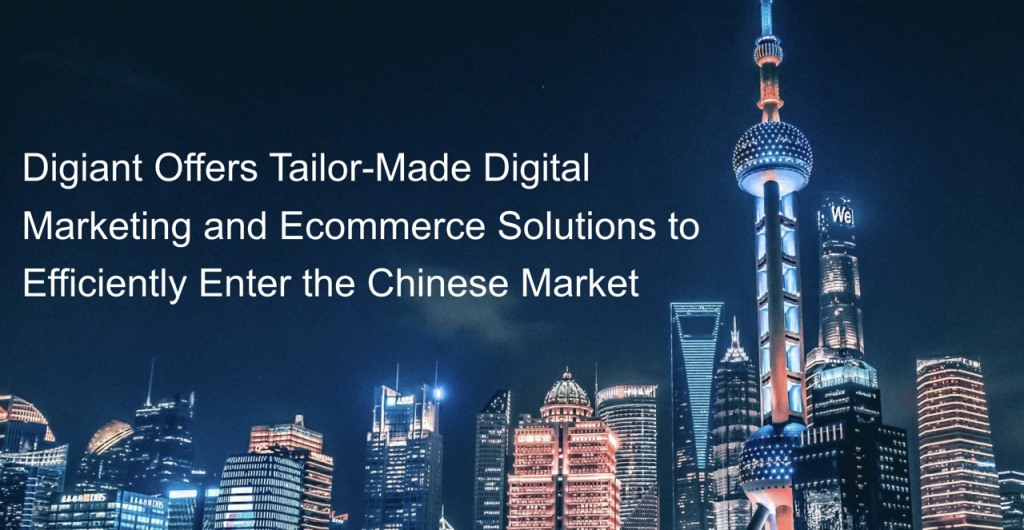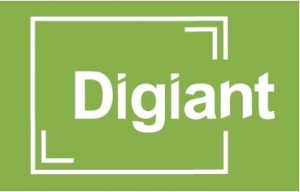



Digiant Global (https://www.digiantglobal.com/) is a leading digital marketing firm, launched in 2016 and headquartered in Beijing. It has partner offices in Milan, Munich and Buenos Aires. Digiant offers tailor-made digital marketing and e-commerce solutions to international brands to effectively enter the Chinese market. Key focuses are consumer brands, largely from but not limited to European brands.
EU SME Centre: Hi John, can you please introduce in more detail the services that Digiant offers?

John Piao: Digiant offers a wide range of tailor-made services, including:
Business consultancy services, to analyse and assess the market potential, strategy, as well as key regulatory requirements for international clients looking to enter the Chinese market.
Marketing services, mainly in the digital sphere, but sometimes also featuring online-offline integration to showcase goods physically. The most frequent services requested by international clients are: creation and management of Chinese social media accounts, SEO for Chinese audience, preparation of press releases and video content, and organisation of promotional campaigns Key Opinion Leaders or media. Digiant’s key approach goes beyond translating key messages from international brands in Chinese; it adopts an in-depth localisation to make the message suitable and appealing to Chinese consumers, semantically and visually, thus fully taking into account their behaviour, trends, preferences and needs. For instance, when shooting promotional videos, the design of the stage is often adapted to reflect Chinese traditional elements or holidays.
Market research, to define the size and segment of market, but also to identify recent trends, consumer personas, as well as top sellers and main competitors. Competitor research is extremely important and indeed represents a core pillar of Digiant’s approach: what are your competitors’ selling points? What platforms and channels do they sell their products through? Do they operate their own online flagship stores, are they present offline too? What kind of customer services do they offer? As we will see below when introducing one of Digiant’s successful projects involving EU pet food, EU brands need to have a detailed picture of their competitors and develop, accordingly, their unique selling points and competitiveness.
Furthermore, Digiant also offers tailored Cross-Border E-Commerce solutions, allowing international brands to start selling online in China in a few weeks with affordable investment.
Please describe one successful project of an EU brand selling to China via CBEC
One of the most interesting projects that we have involves a small European brand of pet food products – mostly dog and cat food. The project has just entered its third year of business operations in China, so we started right at the outset of the pandemic in January 2020. The brand did not have presence before in China, so it was completely new to the Chinese audience. Currently, we are preparing to start selling the brand’s products via general trade, but at this stage we still sell it via CBEC platforms only, specifically through:
Tmall Global – Flagship store. This is the first step that we have taken for this brand: we started by opening a brand flagship store on Tmall Global. The reason is that resources were relatively limited, so we could only start with one platform only. Tmall Global is expensive, more than other platforms, however it is a necessary choice for those brands which have real ambition to grow in the Chinese market: with a brand flagship store on Tmall Global, the brand builds trust and reputation among Chinese consumer, it can communicate its story and values more effectively, and thus is excellent for building a brand.
Direct procurement with both Tmall Global and JD Worldwide. At the second year of operation, we started the direct procurement model with Tmall Global, as well as with JD Worldwide. This allows us to sell the products directly to the platforms, which in turn re-sell the products on their marketplaces. We think this new model was possible thanks to successful branding efforts and achievements in the previous year – without these, it is very difficult for to work in this way with Tmall Global and JD Worldwide.
WeChat store. We have created WeChat groups where our loyal customers are invited to join. Through the group, we share news about the brand, as well as new sales promotions or loyalty programmes. Consequently, we decided to open a Wechat store as well, mainly as a supporting tool for our WeChat groups. WeChat allows a very convenient way to communicate and share content, therefore it is very effective for customer engagement and management.
All the brand’s products are available for purchase on all the three platforms simultaneously, therefore we do not operate through exclusive agreements. However, product prices can sometimes be different for products sold via the direct procurement model to Tmall Global and JD Worldwide – this may depend on the platforms’ own choices to adjust prices based on external factors, competition, or own promotional activities. By contrast, WeChat stands out from the others as it gives more flexibility and is less constrained by competitors’ actions. Through WeChat store, we do not offer any discounts, but only coupons to loyal consumers that joined our WeChat groups, therefore the final price paid by them can be lower than that paid on other platforms.
What were the main challenges encountered during this project?
For sure, there were a few challenges. The main one involved regulation: sometimes regulatory requirements change on a very short notice, new requirements are added, and this can potentially have a huge impact not only on your product sales, but also on your entire supply chain. For CBEC products, the most fundamental requirement is to be included in the CBEC Positive List; for food and supplements, it is also required to ensure that their ingredients are allowed to be imported and sold in China. Regarding the label, it is not mandatory to have a Chinese label affixed to the product, but in our opinion it is better to have it. Supposing you are a brand from a smaller country in Eastern Europe: if the key information of the product such as the list of ingredients or usage instructions, are entirely in the local language, it will be very difficult even for Europeans to understand what the product is about.

In your view, what are the best – and least – selling EU brands, compared to other competing international brands?
Compared to competing brands, e.g. from Australia, US, Japan or Korea, from EU brands Chinese consumers expect a better story telling: Europe has a richer and longer history, Chinese consumer like to understand and feel the history of the brand. So, if this card is played well, it could represent a very strong selling point. At the same time, EU brands should actively leverage on high-tech / innovative features of their products to differentiate from others: for instance, how the product’s recipe is the result of long R&D efforts.
From a sectoral perspective, CBEC is the best for two types of brands: those which have a long and complicated process to be imported into China via general trade; and those that cannot be found elsewhere in China, e.g. in offline stores, so CBEC is in practice the only way to buy those products. In my opinion thus, CBEC brands involved in health supplements but also food in general, pet food, skin care, fashion items, are the most interesting ones with solid long-term potential for growth in the Chinese market. By contrast, in my personal opinion, products that do not have a high margin do not have such potential. Don’t get me wrong: it is not because Chinese consumers do not like these products; it is just that for such products it is difficult to become profitable, even if you sell them for the equivalent of 1 EUR, as CBEC logistics is difficult and costly. It is true that the upfront costs for starting a CBEC business are much lower than general trade; but if you calculate the costs from the perspective of a single selling unit, CBEC then becomes more expensive than general trade. Therefore, in my opinion, it will be difficult for products with small margins to become profitable in China via CBEC – maybe the situation will change if you integrate general trade channels. In addition to these, I think that for products in fashion, luxury, or furniture, CBEC is not the most appropriate channel.
How do you think the expectations of Chinese customers have changed after three years of the pandemic? What is your outline for the future?
I think that Chinese consumers are expected a wider range of new brands and products entering the Chinese market. At the same time, prices should be more competitive and attractive compared to the three years of the pandemic. Chinese customers are fully aware of the difficulties that many foreign brands have experience during the pandemic in bringing their products into China. Now that all the restrictions have been lifted, now they expect it to be easier to deal with logistics, so they expect better deals. In short: more product offering, at more competitive prices.